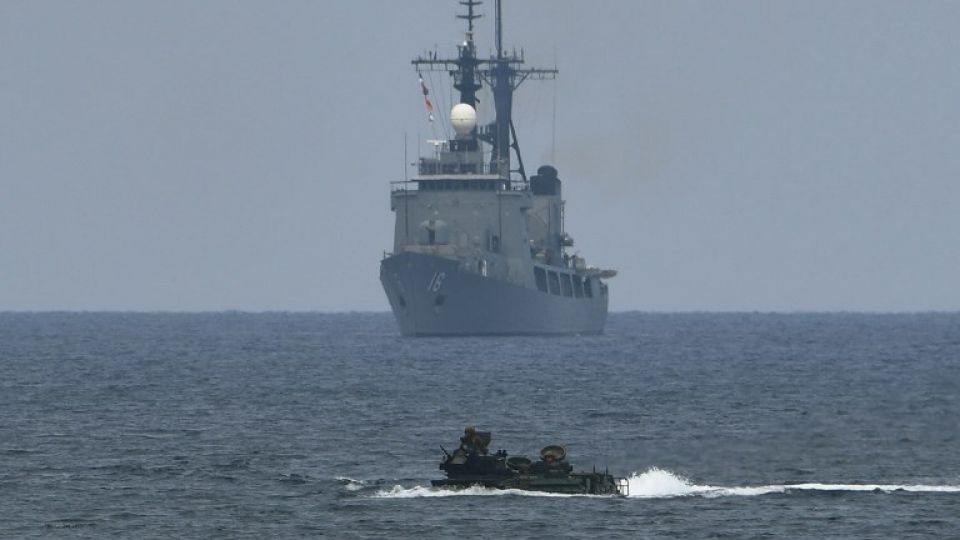June 8, 2018
Since President Duterte appears to have adopted an “appeasement” policy toward Beijing, it is only the US that can thwart China’s aggressive actions.
While the United States has said it would not meddle in the conflicting claims of five countries in the South China Sea, it has nevertheless issued a stern warning against China’s militarization of the disputed area.
At the annual Shangri-La Dialogue held June 2 in Singapore and attended by defense and security officials in the Asia-Pacific region, US Defense Secretary James Mattis bluntly accused China of “intimidation and coercion” in the Indo-Pacific and declared that Washington will not abandon its role in the region.
“Make no mistake: America is in the Indo-Pacific to stay. This is our priority theater,” Mattis said.
Earlier, a Pentagon official also said the United States could wipe out China’s artificial islands in the South China Sea. When asked by a reporter about the ability of the United States to “blow apart” one of China’s controversial manmade islands, Lt. Gen. Kenneth McKenzie, director of the Joint Staff, said: “I would just tell you that the United States military has had a lot of experience in the Western Pacific taking down small islands.”
Mattis also confirmed previous intelligence reports that China’s militarization of artificial features in the South China Sea includes the deployment of antiship missiles, surface-to-air missiles, electronic jammers and, more recently, the landing of bomber aircraft at Woody Island in the Paracels.
Woody Island is not claimed by the Philippines but only by China, Vietnam and Taiwan. However, the three coral reefs — Kagitingan (Fiery Cross), Zamora (Subi) and Panganiban (Mischief) — that China has also reclaimed and transformed into military bases are all within the territory of the Philippines, as spelled out in the July 2016 ruling of the Permanent Court of Arbitration in The Hague.
Aside from China, the other claimants to parts of the South China Sea are the Philippines, Vietnam, Malaysia and Brunei Darussalam.
Since President Duterte appears to have adopted an “appeasement” policy toward Beijing by setting aside the PAC ruling, it is only the United States that can thwart China’s aggressive actions, which could affect the vital sea lane where trade worth some $5 trillion passes annually.
Washington was among the countries that urged Beijing to honor the arbitral ruling. But China has adamantly refused, saying the South China Sea has been part of its territory “since ancient times.”
Among the claimant countries, Vietnam, China’s ideological brother, has been very vocal in protesting Beijing’s occupation of the disputed islands, but mainly through verbal protests. Indeed, the United States is the only hope of the claimant countries to force China to stop militarizing the area and obtain some peace and stability in the region.
But since it cannot force China to settle the conflict with its neighbors, the United States has ramped up its freedom of navigation operations in the area. Recently, two US Navy warships sailed within 12 nautical miles off the disputed Paracel Islands.
According to the United Nations Convention on the Law of the Sea, the 12 miles off the coast of a given territory are considered sovereign waters owned by the country, but beyond that would be international waters.
On several occasions in recent years, US Navy ships have ventured into the 12-mile vicinity of some South China Sea territories. But aside from the usual condemnation from Chinese authorities, there has been no actual military confrontation.
“We have a comprehensive global Freedom of Navigation Operations program that seeks to challenge excessive maritime claims in order to preserve the rights, freedoms, and uses of the sea and airspace guaranteed to all nations under international law,” Lt. Col. Jamie Davis, Pentagon spokesman, said.
But whether China will heed Washington’s warnings to revert its reclaimed islands from military to civilian use, as was originally envisioned, would seem to be wishful thinking at this point.
Alito L. Malinao is a former diplomatic reporter and news editor of the Manila Standard. He now teaches journalism at the Pamantasan ng Lungsod ng Maynila and is the author of the book “Journalism for Filipinos.”


